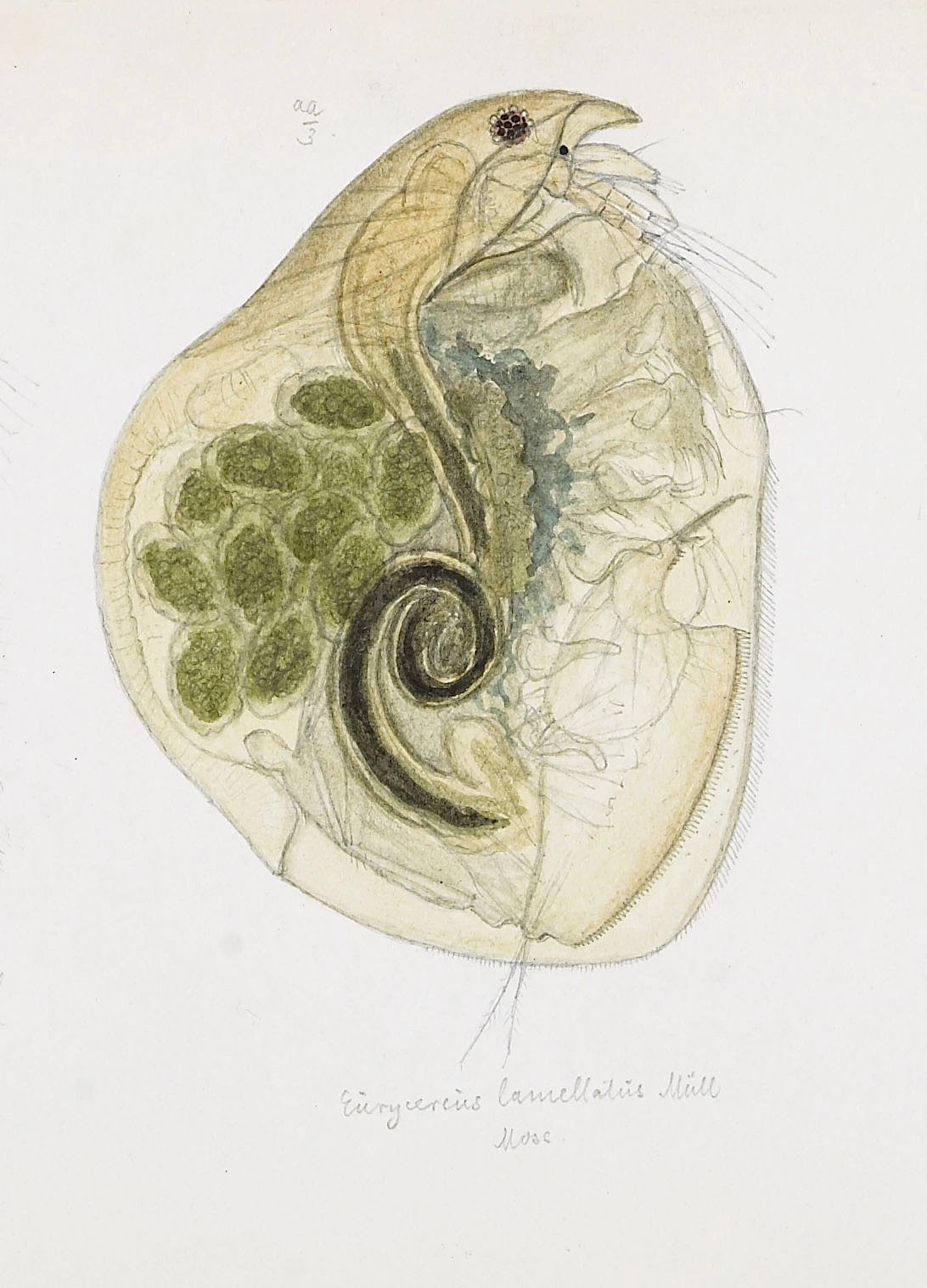Eurycercus lamellatus
Eurycercus lamellatus is one of the largest species among the chydorids and is found in localities of all sizes from sea level and up to high mountains. It is an important food item for fish.
Key characteristics
Eurycercus lamellatus (female)
Eurycercus lamellatus (male)
Eurycercus lamellatus is one of the largest species among the chydorids. More than half of the length of the antennule is reaching beyond the end of the rostrum. Its postabdomen is large compared to the size of the carapace and has 89–121 teeth. The proximal teeth are slightly smaller than the distal ones. Its colour vary from a yellowish red to a olivaceaus brown, often with elements of green.
Female: Length 1.5–4.0 mm
Male: Length 1.0–1.4 mm
Ecology and distribution
E. lamellatus is a littoral species found in all parts of the country, and in 37 % of the water bodies. It is found from sea level and up to 1355 m a.s.l. in localities of all sizes including small ponds. However, it occurs with its highest frequency when surface area is more than 1 ha. The species is an important food item for fish, and is more common in water vegetation than on sandy/stony bottom. E. lamellatus is acid tolerant (pH 3.8–8.8) and is common both in electrolyte poor water and in electrolyte rich water (0.4–53 mS/m).
| Vitenskapelig navn | < 4,5 | 4,5 - 4,9 | 5,0 - 5,4 | 5,5 - 5,9 | 6,0 - 6,4 | 6,5 - 7,0 | 7,0 - 7,4 | > 7,5 |
|---|---|---|---|---|---|---|---|---|
| 8 | 40,5 | 44 | 45,8 | 46 | 37,7 | 35,4 | 26,2 |
| Vitenskapelig navn | < 1,0 | 1,0 - 1,4 | 1,5 - 1,9 | 2,0 - 2,9 | 3,0 - 3,9 | 4,0 - 4,9 | 5,0 - 6,9 | 7,0 - 9,9 | > 10,0 |
|---|---|---|---|---|---|---|---|---|---|
| 37,5 | 39,1 | 40,8 | 41,1 | 38,9 | 34,6 | 37,6 | 29,6 | 28,2 |
| Vitenskapelig navn | < 0,01 | 0,01 - 0,09 | 0,1 - 0,9 | 1,0 - 9,9 | 10,0 - 99 | 100 - 999 | > 1000 |
|---|---|---|---|---|---|---|---|
| 33,3 | 14,9 | 23,5 | 36,7 | 44,2 | 46,3 | 60,9 |
| Vitenskapelig navn | < 100 | 100-299 | 300-499 | 500-699 | 700-999 | >1000 |
|---|---|---|---|---|---|---|
| 22,4 | 47 | 45,5 | 37,3 | 40,3 | 27,5 |
Look-alikes
Eurycercus glacialis


